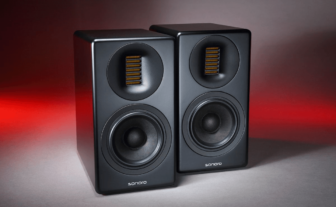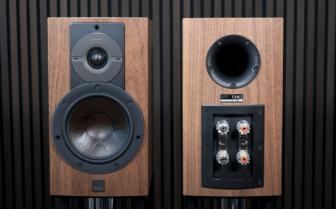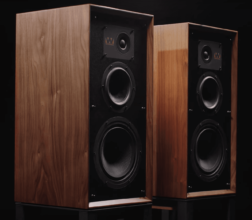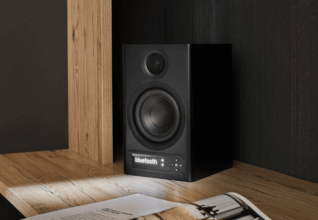KLH Model Five Review
We Will Rock You – Even though it was practically absent from the German market for decades, the American brand KLH, founded in 1957, is among the pioneers of US consumer electronics. And KLH is back. Distributed by Bellevue Audio, the top model of the speaker portfolio presents itself here—the current version of the classic Model Five.
by Tom Frantzen
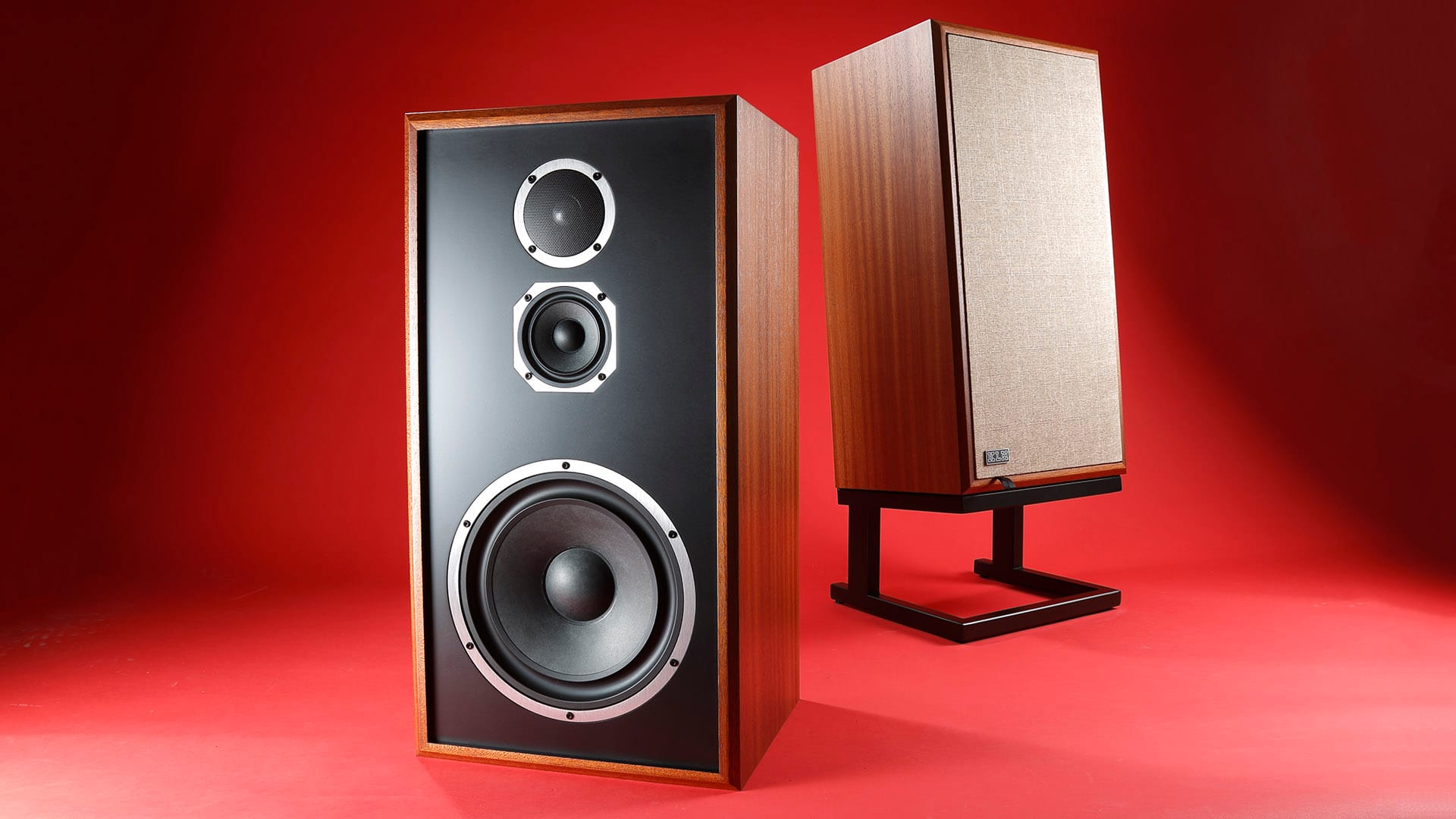
One of the three KLH founders, the extremely inventive Henry Kloss (1929–2002), is known to many, even if unknowingly. In the 2000s, he created the design icon and million-seller table radio “Tivoli Model One,” which drew upon his “KLH Model Eight.”
Image Gallery
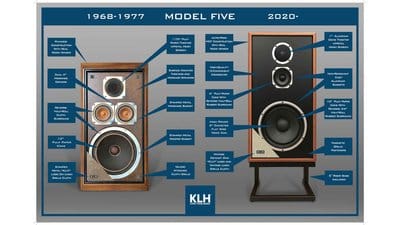

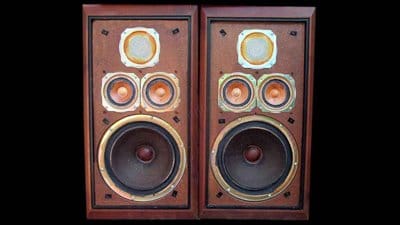
Especially in the 1960s to 1970s, it was primarily the KLH speakers that gained respect and sometimes caused a stir. In the 1970s, KLH Research even belonged to the same group of companies as Infinity and Peerless. One could say it was mainly the rather large-volume and therefore usually stand-mounted “compact” boxes Model Three and Model Five with which KLH made its money and gained quite a bit of fame.
Nowadays, this “70-liter size class,” which actually lies somewhere between what we consider “compact” today and what is unmistakably a floor-standing speaker, is experiencing a renaissance. Alongside classic British monitors like Harbeth, Spendor, or Wharfedale, KLH is now back, distributed by Bellevue Audio in Unna.
7Review has opted for the larger of the updated, classic speakers—the “Model Five.” The pair is supposed to cost $3,150 (stands and linen covers included), which we find surprisingly affordable. By the way, in the 1971 test by our colleagues at HiFi Stereophonie, the KLH was already able to relegate the reference speaker L710 from Braun to second place as “not entirely free from coloration, but speakers that flatter the sound image.”
Modernized Role Model
Compared to the approximately equally sized “original” version, it’s immediately noticeable that the second midrange driver of the three-way construction has been omitted. Due to better dispersion behavior, they decided to opt for an even more powerful, modern driver that closely resembles the old one. It’s a 10-inch cone with a special rubber surround and paper diaphragm in a stable aluminum basket. Previously, these were made of stamped steel. The same applies to the powerful 25-centimeter woofer, also with a compliant paper diaphragm and aluminum basket, as well as a generously dimensioned flat wire voice coil and strong drive.
Nowadays, cone tweeters are used only in exceptional cases; the dome is vastly superior, and here a 2.5 cm aluminum variant protected by a metal grille—against, for example, children’s fingers—is used. The fabric grilles attach magnetically and emphasize the vintage character.
The modern crossover now ensures optimal distribution with twelve high-quality components. Included are—within the price!—high-quality, backward-tilted (by five degrees) steel stands weighing 3.6 kilograms, on which the speakers stand very stably and hardly slip. Commendable. Speaking of stability, the well-crafted, real wood-veneered cabinet consists of MDF about 19 mm thick. The well-made terminal is designed for single-wire cabling with loose cable ends, bananas, or spade connectors.
“Tone Balance”
A kind of “tone balance” allows for rudimentary but surprisingly effective adjustment to the listening room or personal preferences by subtly “tilting” the frequency response as a whole around 400 Hertz (by up to 1.5 dB at the extremes). We sometimes found it difficult to choose between the middle position “Mid” and “Lo” since both sounded good. With “Lo,” the lower mids were a bit fuller, and the bass slightly richer. The treble-emphasized setting, on the other hand, seemed hard to bear. Fans of anemic, “fast” sounding, and analytical mini loudspeakers may feel addressed by that—not me. Instead, one wants to listen to the downright “juicy” KLH in “Mid” or “Lo” forever. With rock music, you can test this perfectly; “Queen” is very suitable for this occasion.
This approach is clearly more like what you find as monitors in the remaining record stores—strong bass, with musical flow and tonal colors, simply pleasant and music-oriented.
A special feature among speakers remains the “Acoustic Suspension” principle. This is nothing other than the consistent pursuit of a closed enclosure, which thus dispenses with bass-supporting technologies like bass reflex, passive radiators, or even a quarter-wave transmission line (transmission line).
Some of the already mentioned British loudspeakers also rely on this because it leads to particularly precise bass reproduction. The air compliance, against which the returning diaphragm acts like on a shock absorber, ensures that uncontrolled wobble movements or decay capers are avoided. Of course, to reproduce really deep tones, one must allow for a bit more volume, which quickly explains the generous dimensions of the KLH. Volume, drive, and suspension are thus the essential variables for bass reproduction.
Pure Musicality
The result can be seen and heard. This is more than “vintage.” Much more. With good efficiency and an average of 6.5 ohms, the 20-kilogram KLH is easy to drive and “ready to go.” Relaxed and effortless, music flows into the room—vivid, voluminous, with springy, indeed deep bass.
It sounds quite cozy, colorful, but not at all like mush; on the contrary, transparent, detailed, with traceable bass lines, contoured and open at the top end, albeit pleasant rather than overly bright. The energy balance is so good that one can easily imagine the success—I would get along just fine with this speaker in my living room! It is also excellent for movie sound and never annoys. There are no quirks regarding placement or music selection, but the KLH grows beyond itself with the electronics, such as a Musical Fidelity M8xi.
If you’re not careful, you’ll succumb to this rich and perhaps unfamiliar sound for some hi-fi fans. Well, that may be the intention of the provider. In any case, during the preparations for the test, we heard that it would “only work with vintage electronics.” We cannot let that stand. On good amplifiers, whether from today, yesterday, or the day before, the KLH reaches absolute peak form, conveys an enormous fun factor—and furthermore makes a really good visual impression. With both old and new music.
The KLH doesn’t look like sculptures or works of art; everyone immediately recognizes the speaker without detours and can easily guess its purpose. However, everyone immediately asks about it, precisely because it looks “like before”—and sounds empathetic. A real hit!
KLH Model Five Specs
Product Information:
- Price: ~3,000 Euros (includes steel stand)
- Dimensions (W x H x D): 35 x 66 x 32 cm
- Warranty: 10 years
Evaluation:
Lab Comment:
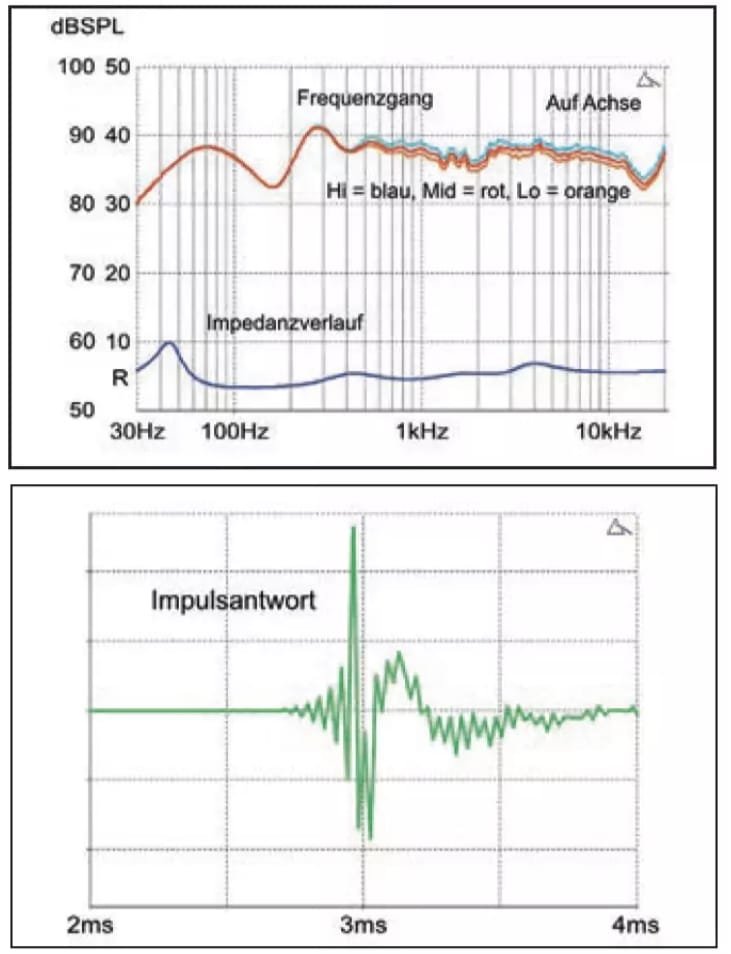
A well-balanced speaker with high efficiency (88 dB @ 2.83V/1m/1kHz) and good dispersion characteristics. It has a gentle, linearized impedance, good but not entirely resonance-free transient response, and low distortion.
Technical Data:
- DC Resistance: 5 Ohm
- Minimum Impedance: 3.38 Ohm at 105 Hz
- Maximum Impedance: 10 Ohm at 44 Hz
- Sensitivity (2.83V/m): 88 dBSPL
- Power Required for 94 dBSPL: 5.46 W
- Lower Cutoff Frequency (-3dBSPL): 49 Hz
- Total Harmonic Distortion (63 Hz / 3 kHz / 10 kHz): 0.58% / 0.1% / 0.14%
Features:
- Three-way speaker with stand
- Linen grille and tone control
- 25 cm woofer and 10 cm cone midrange driver with special surround and aluminum basket
- 2.5 cm aluminum dome tweeter with protective grille
Verdict
When you purchase through links on our site, I may earn an affiliate commission. Here’s how it works.





